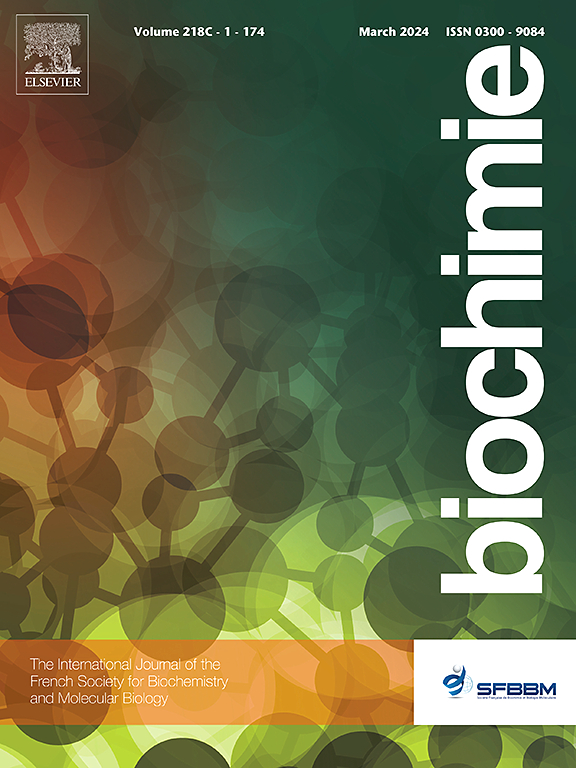Quantitative detection of 2′-O-methylated residues in non-coding RNAs using DNAzymes and quantitative RT-PCR
IF 3
3区 生物学
Q2 BIOCHEMISTRY & MOLECULAR BIOLOGY
引用次数: 0
Abstract
In recent decades, post-transcriptional RNA modifications have emerged as a critical regulatory network in cellular processes. The emergence of advanced technologies, including next-generation sequencing (e.g., Illumina) and third-generation sequencing (e.g., Nanopore and PacBio), has significantly improved the detection of RNA modifications in both coding (mRNAs) and non-coding RNAs (ncRNAs). However, these powerful and transcriptome-wide approaches often generate a significant number of false positive hits, highlighting the need for complementary methods allowing validation of the RNA modification profile as well as more precise quantification. In this study, we present further optimization of a straightforward and sensitive protocol using RNA-cleaving deoxyribozymes (DNAzymes) to validate 2′-O-methylations. The validity of this protocol was demonstrated by the analysis of two well-characterized 2′-O-methylated adenines in human U1 and U2 small nuclear RNAs (snRNAs). Using siRNA targeting NOP58 and antisense oligonucleotides targeting scaRNA7, we showcased the sensitivity and specificity of our approach in detecting variations in 2′-O-methylation levels. The DAMP-RNA (DNAzyme-Assisted Methylation Profiling of RNA) method, combining the DNAzyme cleavage with RT-qPCR provides a robust and efficient way to investigate known 2′-O-methylation in any cellular RNA regardless of its abundance, yielding valuable insights into the dynamics of RNA modifications. Despite its limitations, this method represents a significant advancement, enhancing clarity and reproducibility in the epitranscriptomics field, paving the way for further exploration in the RNA biology.

使用DNAzymes和定量RT-PCR定量检测非编码rna中2'- o -甲基化残基。
近几十年来,转录后RNA修饰已成为细胞过程中的关键调控网络。先进技术的出现,包括下一代测序(如Illumina)和第三代测序(如Nanopore和PacBio),显著提高了编码RNA (mrna)和非编码RNA (ncRNAs)中RNA修饰的检测。然而,这些强大的转录组范围的方法通常会产生大量的假阳性,这突出表明需要补充方法来验证RNA修饰谱以及更精确的量化。在这项研究中,我们进一步优化了一种使用rna切割脱氧核酶(DNAzymes)验证2'- o -甲基化的简单而敏感的方案。通过对人U1和U2小核rna (snrna)中2'- o -甲基化腺嘌呤的分析,证明了该方案的有效性。使用靶向NOP58的siRNA和靶向scaRNA7的反义寡核苷酸,我们展示了我们的方法在检测2'- o -甲基化水平变化方面的敏感性和特异性。DAMP-RNA (DNAzyme- assisted Methylation Profiling of RNA)方法,将DNAzyme切割与RT-qPCR相结合,为研究任何细胞RNA中已知的2'- o -甲基化提供了一种强大而有效的方法,无论其丰富程度如何,都能对RNA修饰的动力学产生有价值的见解。尽管存在局限性,但该方法代表了显着的进步,提高了表观转录组学领域的清晰度和可重复性,为RNA生物学的进一步探索铺平了道路。
本文章由计算机程序翻译,如有差异,请以英文原文为准。
求助全文
约1分钟内获得全文
求助全文
来源期刊

Biochimie
生物-生化与分子生物学
CiteScore
7.20
自引率
2.60%
发文量
219
审稿时长
40 days
期刊介绍:
Biochimie publishes original research articles, short communications, review articles, graphical reviews, mini-reviews, and hypotheses in the broad areas of biology, including biochemistry, enzymology, molecular and cell biology, metabolic regulation, genetics, immunology, microbiology, structural biology, genomics, proteomics, and molecular mechanisms of disease. Biochimie publishes exclusively in English.
Articles are subject to peer review, and must satisfy the requirements of originality, high scientific integrity and general interest to a broad range of readers. Submissions that are judged to be of sound scientific and technical quality but do not fully satisfy the requirements for publication in Biochimie may benefit from a transfer service to a more suitable journal within the same subject area.
 求助内容:
求助内容: 应助结果提醒方式:
应助结果提醒方式:


